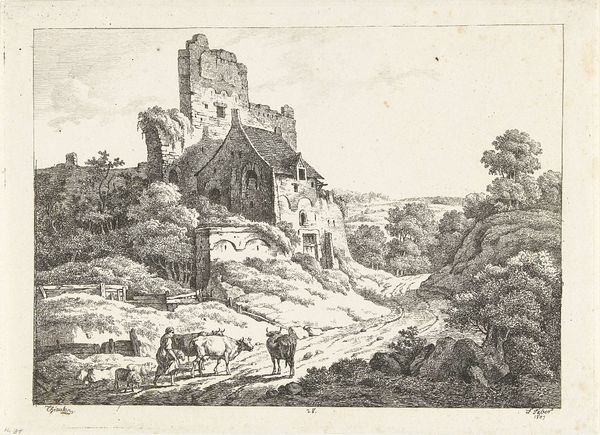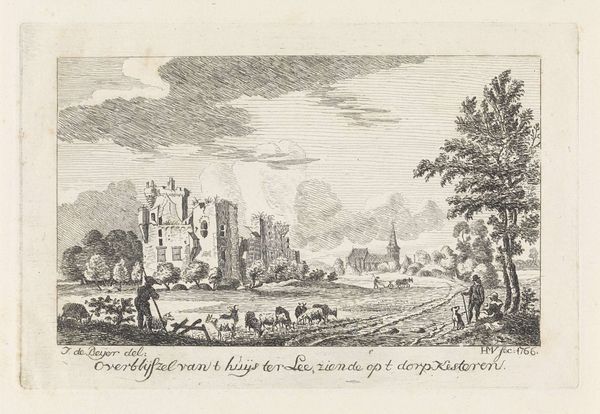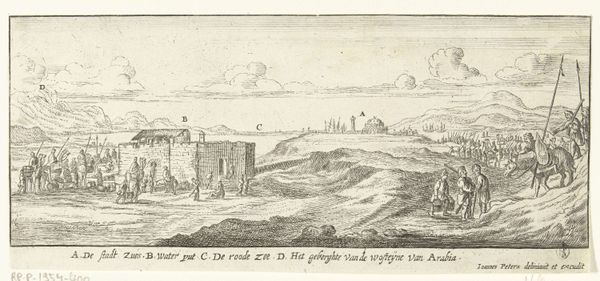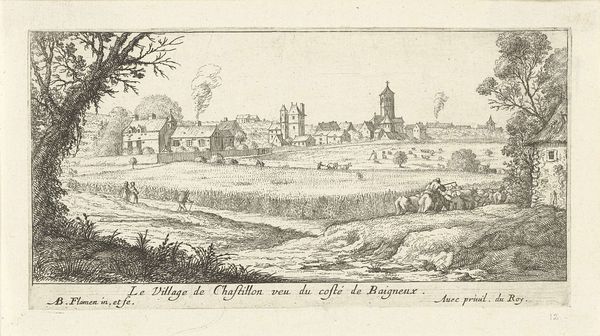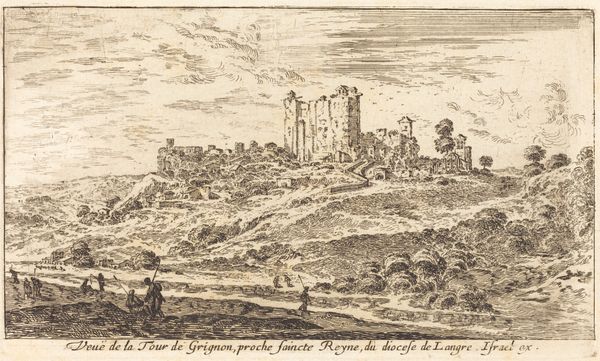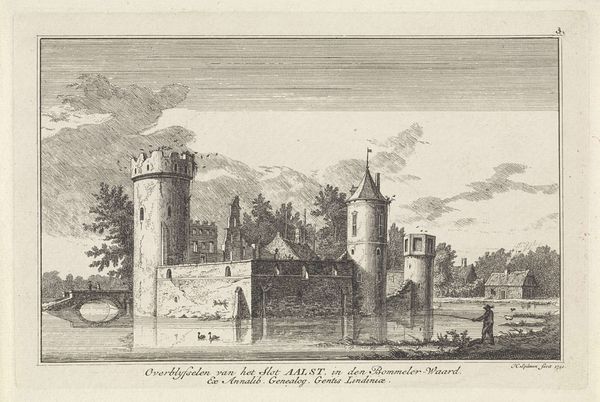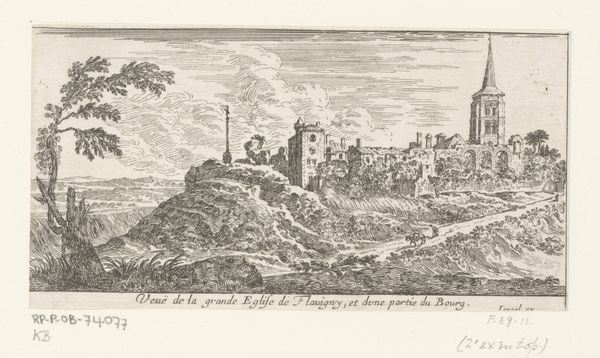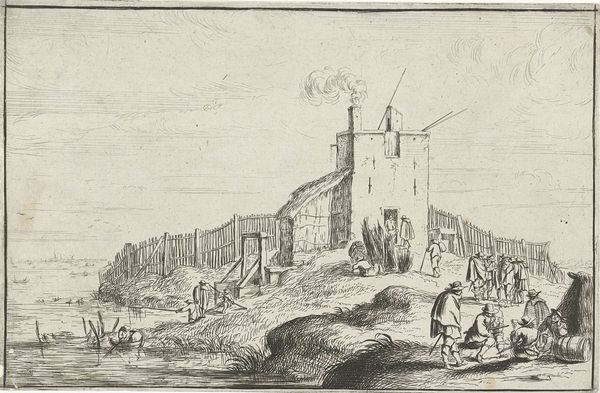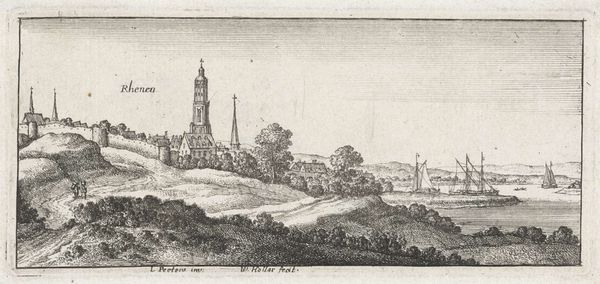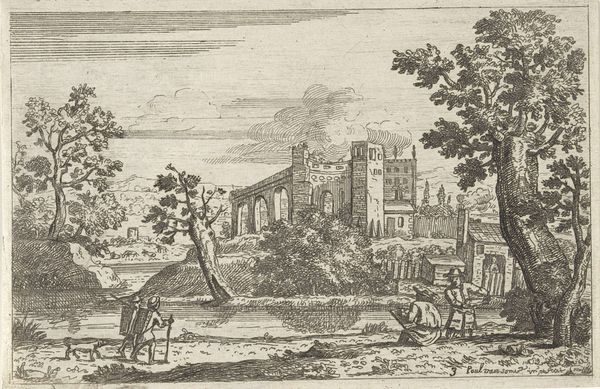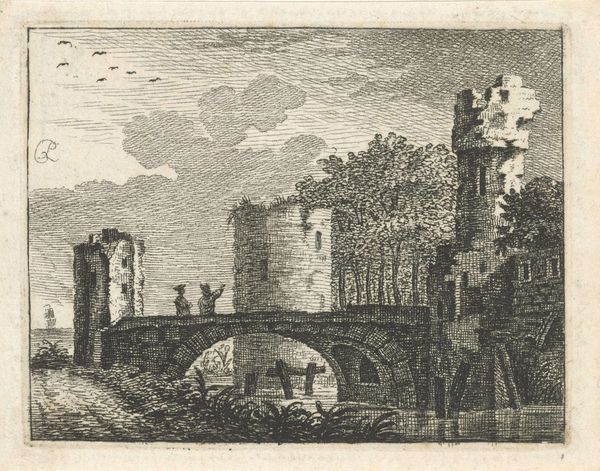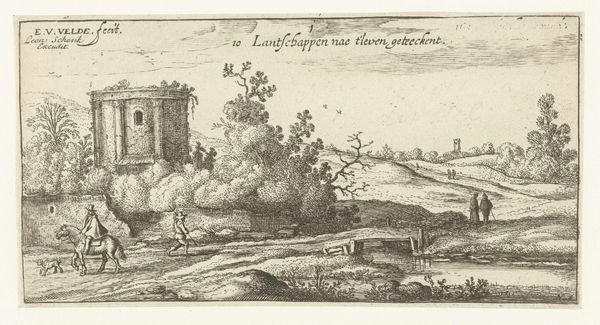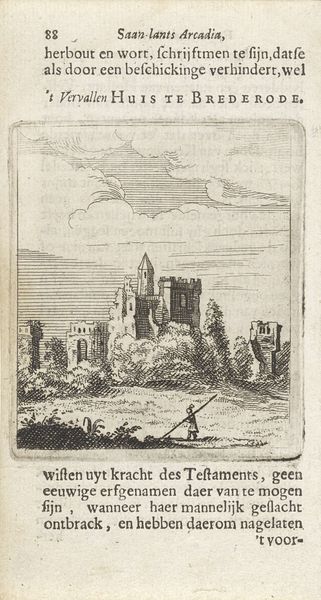
print, etching, engraving, architecture
#
dutch-golden-age
# print
#
etching
#
old engraving style
#
landscape
#
engraving
#
architecture
Dimensions: height 120 mm, width 223 mm
Copyright: Rijks Museum: Open Domain
Editor: This is Geertruydt Roghman’s "Oude kerk in Muiderberg," an etching and engraving from the mid-17th century. The stark lines and contrasts are striking. The landscape feels barren, but populated with a few figures that hint at commerce and everyday life. How would you interpret this piece? Curator: I'm drawn to the method of its production. As a print, it speaks to a burgeoning art market, accessible beyond the elite. Think about the labor involved: the meticulous carving of the plate, the inking, the repeated pressing. It transforms a landscape into a commodity. Do you notice the positioning of the church within the landscape? Editor: Yes, the church seems central yet also overwhelmed by the nature around it. There's a human scale introduced by the people on the road but overall, there is desolation to the church ruins. Curator: Exactly. Roghman isn't just representing a place; she's documenting a specific relationship between architecture, nature, and society, and its change with time. Consider the etching’s materials, the paper, the ink; these are all elements of a system of distribution and, ultimately, consumption. What could that imply about this moment in Dutch history? Editor: Maybe that even religious architecture, powerful as it was, becomes another object within a changing landscape driven by expanding capitalism and a changing landscape due to reformation, conflicts and economical changes? Curator: Precisely. The etching technique, enabling reproduction and distribution, makes the Church like another manufactured product. This transforms the way viewers would engage with their surroundings. It questions power dynamics. Editor: It’s amazing how analyzing the method behind this artwork unlocks new insights. It certainly changes the way I consider landscape art and how it captures an intersection between industry, art and people. Curator: Agreed. By focusing on the printmaking process, we uncover complex ideas about labor, value, and social change.
Comments
No comments
Be the first to comment and join the conversation on the ultimate creative platform.
